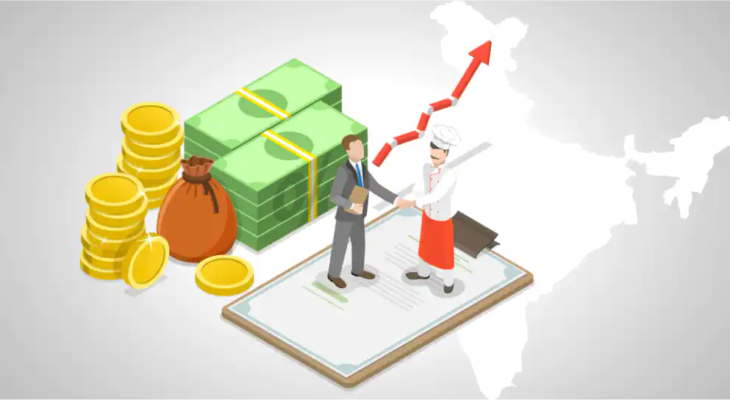Microfinance loans are an essential source of financing for individuals who are not eligible for traditional bank loans due to their lack of credit history or limited income. In the Philippines, microfinance has become a popular way for individuals to access credit, and many microfinance providers have started offering loans online. In this article, we will take a closer look at microfinance loans in the Philippines and highlight some of the best options available to borrowers.
Microfinance is a type of financial service that provides loans, savings, and insurance products to low-income individuals, entrepreneurs, and small businesses. The goal of microfinance is to help people who lack access to traditional financial services to build their businesses, create jobs, and improve their lives.
In the Philippines, microfinance has become a vital part of the financial system. According to the Bangko Sentral ng Pilipinas (BSP), the country’s central bank, there are more than 800 microfinance institutions (MFIs) operating in the Philippines, serving over 10 million clients.
There are several reasons why microfinance has become popular in the Philippines. One of the main reasons is that many Filipinos lack access to traditional banking services. According to a survey conducted by the BSP, only 22% of Filipino adults have a bank account, and only 4% have access to formal credit.
Another reason why microfinance has become popular is that many Filipinos are entrepreneurs or small business owners who need financing to start or expand their businesses. According to the Philippine Statistics Authority, there were 1.4 million micro, small, and medium enterprises (MSMEs) in the country in 2018, accounting for 99.5% of all registered businesses.
Microfinance loans are typically small, short-term loans that are designed to help individuals cover their immediate financial needs. These loans are usually unsecured, which means that borrowers do not need to provide collateral to obtain them.
In the Philippines, there are several microfinance providers that offer loans online. Here are some of the best options available to borrowers:
| Name of Lender | Loan Range | Repayment Period | Loan Type |
|---|---|---|---|
| 🟢 Tala Philippines | ₱1,000 to ₱15,000 | 21 days to 30 days | Mobile-based lending |
| 🟢 Cashwagon Cash Loan | ₱2,000 to ₱20,000 | 10 days to 180 days | Mobile-based lending |
| 🟢 Asteria Personal Loan | ₱10,000 to ₱100,000 | Up to 12 months | Traditional lender |
| 🟢 Digido (old Robocash) | ₱1,000 to ₱10,000 | Up to 30 days | Online lender |
| 🟢 Vidalia Lending | ₱5,000 to ₱50,000 | Up to 24 months | Traditional lender |
The Philippines has a growing number of Microfinance lenders that offer borrowers several viable financial options for when unforeseen events call for quick access to funds. In this article, we take a closer look at 5 of the country’s top microfinance institutions that specialize in providing easy access loans online.
Tala Philippines offers borrowers loans ranging from ₱1,000 to ₱15,000 with a repayment period of 21 days to 30 days. Tala uses its proprietary credit scoring system to analyze a borrower’s financial behavior to determine their creditworthiness. This mobile-based lending platform is an excellent source of instant cash for borrowers looking for fast access to financing.
Cashwagon Cash Loan, another mobile-based lending platform, provides quick approval loans with amounts ranging from ₱2,000 to ₱20,000 with repayment terms ranging from 10 days to 180 days. This convenient source of financing is a great option for borrowers with pressing financial needs.
Asteria Personal Loan, on the other hand, offers personal loans ranging from ₱10,000 to ₱100,000 with a flexible repayment period of up to 12 months. As a traditional lender, Asteria provides customers with the option to pay back their loans using a more traditional loan structure.
Digido, formerly Robocash, is an online lender that offers loans to borrowers ranging from ₱1,000 to ₱10,000. Digido has a repayment period of up to 30 days, making it a practical source of short-term financing for individuals with immediate financial needs.
Finally, Vidalia Lending offers personal loans ranging from ₱5,000 to ₱50,000 with a repayment period of up to 24 months, making it a good financial option for individuals requiring larger amounts of cash with longer-term repayment options.
When choosing a microfinance provider, it’s essential to consider several factors, including interest rates, fees, and repayment terms. It’s also important to read the provider’s terms and conditions carefully to understand the terms of the loan fully.
In addition to loans, microfinance institutions in the Philippines also offer a range of other financial services to their clients. One of the most important of these is micro-insurance, which provides low-cost insurance coverage to individuals who might not otherwise be able to afford it. According to the BSP, micro-insurance products must be priced such that the premium is no more than 5% of the minimum daily wage for Metro Manila workers. This makes it possible for even the poorest Filipinos to access basic insurance coverage, protecting them from financial hardship in the event of unexpected events such as illness, injury, or death.
Another important microfinance service in the Philippines is micro-savings, which allows low-income individuals to save money in a safe and secure way. Microfinance institutions typically offer low-cost savings accounts with no minimum balance requirements, making it easy for clients to get started. In many cases, micro-savings accounts are also linked to other services such as loans and insurance, creating a more holistic financial ecosystem for clients.
In recent years, mobile technology has played an increasingly important role in the delivery of microfinance services in the Philippines. Many microfinance institutions now offer mobile banking services that allow clients to access their accounts, make loan payments, and even apply for loans using their mobile phones. This has made it easier than ever for low-income Filipinos to access the financial services they need to build a better future for themselves and their families.
Overall, microfinance has had a significant impact on poverty reduction and financial inclusion in the Philippines. By providing access to affordable credit, savings, and insurance products, microfinance institutions have helped millions of low-income Filipinos improve their financial well-being and build more secure futures for themselves and their families. As the microfinance industry continues to evolve and expand, it is likely to play an even more important role in promoting economic development and financial inclusion in the Philippines and other developing countries around the world.



